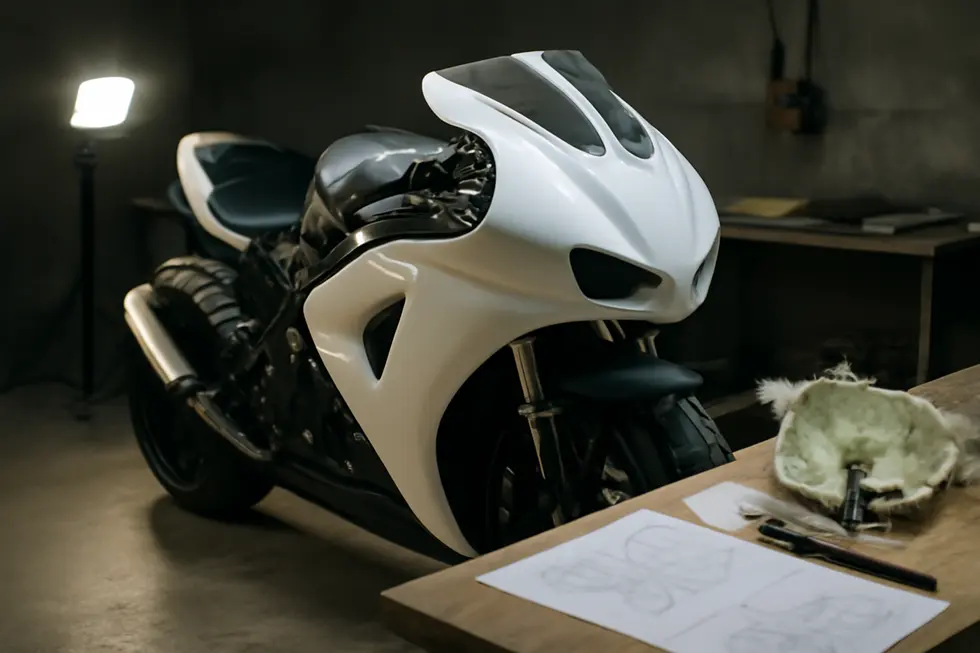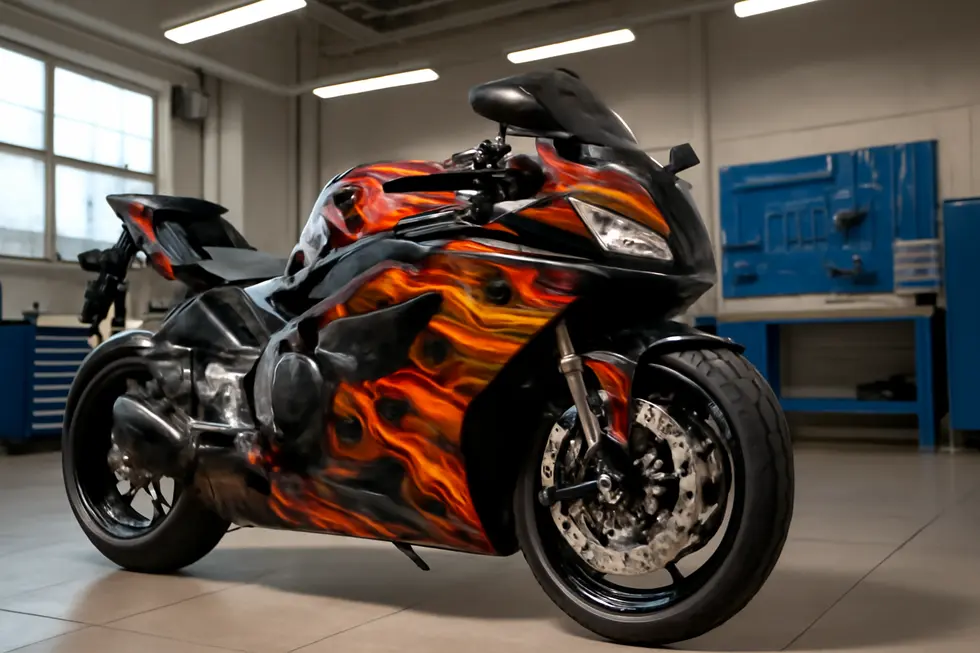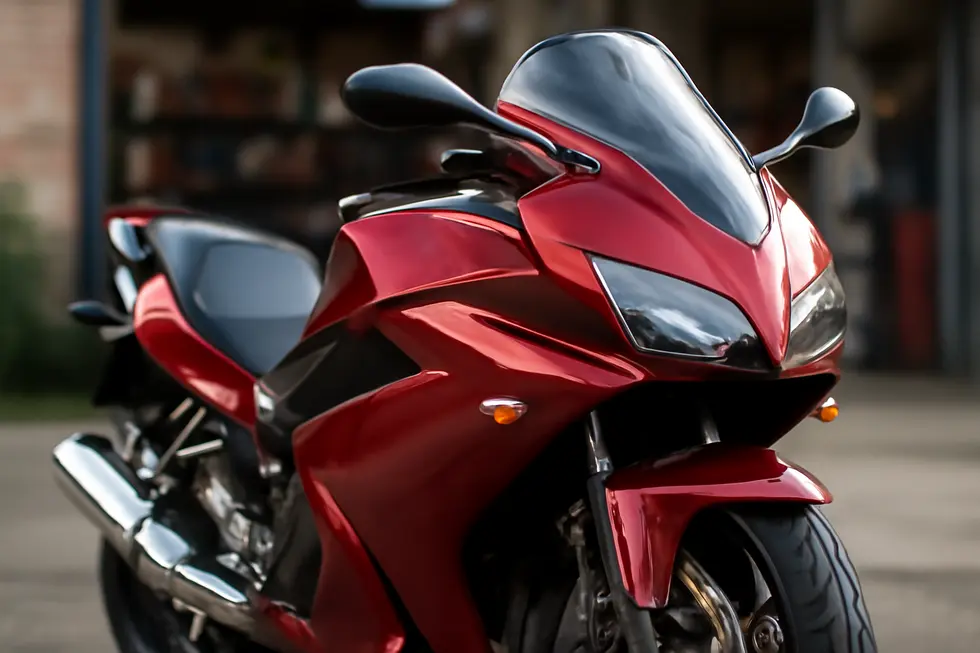Motorcycle Chin Fairings: Boosting Style, Performance, and Protection for Your Business
October 4, 2025 | by summitfairings

Introduction
Motorcycle chin fairings hold a strategic position in both aesthetic appeal and functional performance for a wide range of motorcycles. Positioned beneath the main front fairing or near the headlight, these components not only sharpen aerodynamic efficiency but also shield vital parts like engines and radiators. For business owners in the motorcycle aftermarket and customization industry, understanding the nuances of chin fairings—from material selection and installation to design variations and model-specific offerings—is essential. This knowledge empowers retailers, manufacturers, and custom shops to select, stock, and promote ideal products suited to customer needs. The following sections delve into material composition and installation processes, explore diverse design and aerodynamic functionalities, review aftermarket product options and fitment considerations, and finally, examine how chin fairings enhance both style and performance on motorcycles.
Tables of Contents
Chapter 1: Material Composition and Installation of Motorcycle Chin Fairings
- Balancing Strength, Weight, and Precision: Material Science and Installation Techniques for Motorcycle Chin Fairings
- Balancing Cost, Durability, and Installation in Selecting Motorcycle Chin Fairing Materials
- Navigating Geopolitical and Supply Chain Dynamics in Chin Fairing Materials and Assembly
- How Material Choices and Installation Practices Shape Rider Safety, Performance, and Market Trends
Chapter 2: Design Variations and Aerodynamic Functions of Motorcycle Chin Fairings
- Innovations in Chin Fairing Design that Shape Aerodynamic Performance
- Balancing Cost and Performance: Economic Impact of Chin Fairing Designs and Aerodynamics
- Global Influences Shaping the Aerodynamics and Design Diversity of Motorcycle Chin Fairings
- Balancing Rider Comfort and Societal Benefits Through Aerodynamic Chin Fairing Designs
Chapter 3: Aftermarket Products and Model-Specific Fitment for Motorcycle Chin Fairings
- Material Innovations and Fitment Precision Shaping Quality in Aftermarket Motorcycle Chin Fairings
- Precision Design and Seamless Installation: Enhancing Fit and Function in Aftermarket Motorcycle Chin Fairings
- Economic Forces and Market Dynamics Shaping Aftermarket Customization and Fitment of Motorcycle Chin Fairings
- Navigating Customization and Model Compatibility Challenges in Aftermarket Motorcycle Chin Fairings
Chapter 4: Styling and Performance Enhancements via Motorcycle Chin Fairings
- Cutting-Edge Aerodynamics and Materials Transforming Motorcycle Chin Fairings
- Driving Market Demand: How Styling and Performance Boost Economic Growth through Motorcycle Chin Fairings
- Geopolitical Dynamics Shaping the Evolution and Adoption of Motorcycle Chin Fairings
- How Evolving Rider Preferences Shape the Design and Functionality of Motorcycle Chin Fairings
Chapter 1: Material Composition and Installation of Motorcycle Chin Fairings
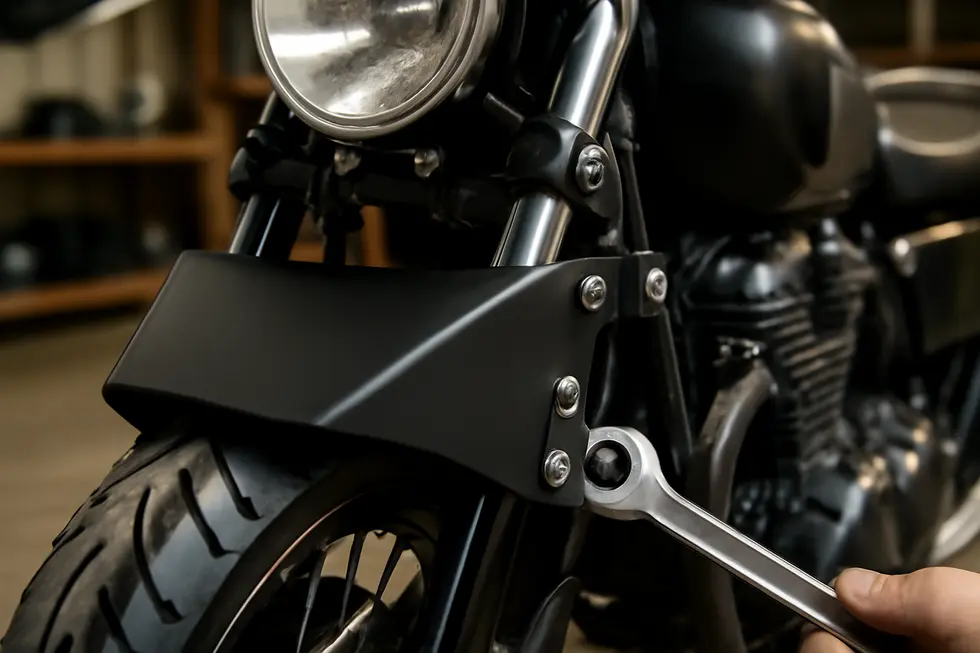
1. Balancing Strength, Weight, and Precision: Material Science and Installation Techniques for Motorcycle Chin Fairings
Motorcycle chin fairings are crafted from materials chosen for specific performance and durability needs, with the three most common being ABS plastic, fiberglass, and carbon fiber. ABS plastic is prized for its toughness and impact resistance. It offers a cost-effective solution that resists damage while remaining relatively easy to repair. Though heavier than composites, it provides an ideal balance between strength and affordability. Fiberglass, a resin-embedded glass fiber composite, reduces weight while maintaining good structural integrity. Its lightweight nature enhances handling without significantly compromising toughness, although it is more brittle compared to ABS.
Carbon fiber stands at the pinnacle of fairing materials, exhibiting exceptional stiffness and strength-to-weight ratio. This material dramatically lowers overall bike weight, boosting performance and agility, especially on high-end or racing motorcycles. Its brittleness demands meticulous care during production and installation to prevent cracking. Installation technologies emphasize precise alignment with motorcycle frame mounting points using bolts or clips that secure the fairing firmly yet allow vibration absorption. Kits often include auxiliary parts like heat shields to protect riders from engine heat, enhancing comfort.
The choice among these materials and installation methods balances cost, longevity, and ride quality — factors that vary by motorcycle type and rider preferences. For enthusiasts seeking optimal performance combined with tailored fit, these options form the backbone of chin fairing innovation. Discover more about these components and their versatility at Summit Fairings’ comprehensive motorcycle fairing resources.
2. Balancing Cost, Durability, and Installation in Selecting Motorcycle Chin Fairing Materials
Choosing the right material for motorcycle chin fairings involves a careful economic balance between cost, durability, and installation demands. ABS plastic remains the most popular choice owing to its affordability, good impact resistance, and ease of installation. Its robust nature combined with UV stability delivers consistent performance for general riders seeking cost-effective solutions. Fiberglass presents a middle option, favored for its moderate price and improved stiffness, making it suitable for track applications where slightly higher durability is desired despite increased brittleness and installation care. At the premium end, carbon fiber offers exceptional strength-to-weight ratio and visual appeal, ideal for high-performance motorcycles; however, its steep cost and specialized mounting requirements elevate both material and labor expenses significantly.
Installation complexity directly correlates with material properties. ABS and fiberglass typically accommodate common mounting hardware and simpler bolt-on procedures, reducing labor costs. In contrast, carbon fiber components demand delicate handling and professional expertise to prevent damage, increasing installation time and expenses. Additionally, reinforcing elements like aluminum or stainless steel brackets, though more costly, can improve the fairing’s longevity and stability, mitigating vibration-related issues and potential repairs.
Ultimately, the economic trade-off hinges on intended motorcycle use and rider priorities. Cost-conscious riders benefit from ABS plastic’s balance of price and durability, while those targeting enhanced performance or style might justify fiberglass or carbon fiber investments. Careful consideration of installation demands alongside material attributes ensures the chosen chin fairing optimizes both budget and functional longevity. For those interested in exploring affordable and versatile fairing options, Discover affordable motorcycle fairings at Summit Fairings offers practical insights and selections.
3. Navigating Geopolitical and Supply Chain Dynamics in Chin Fairing Materials and Assembly
The material composition and installation of motorcycle chin fairings are profoundly shaped by complex geopolitical and supply chain dynamics. Predominantly manufactured from materials like ABS plastic, fiberglass, carbon fiber, and titanium alloys, fairings reflect a balancing act between performance, cost, and supply chain stability. Many manufacturing hubs, notably in China’s Pearl River Delta, control significant shares of plastics and composite production, embedding these regions deeply within global supply chains. This concentration introduces vulnerabilities such as tariff impositions, trade disputes, or logistical disruptions, which can delay delivery and inflate prices.
More specialized materials, such as carbon fiber and titanium fasteners—often coated for enhanced durability—face export controls due to their strategic significance, complicating sourcing and customization. Manufacturers must weigh the availability and cost fluctuations of these materials when designing fairings and selecting installation hardware. Regional manufacturing locations also influence lead times and installation components, with geographic proximity often dictating supplier reliability.
This intricate interplay extends to installation considerations, where advanced fasteners impact not only durability but also ease of assembly and maintenance. Companies increasingly seek to diversify production or reshore certain processes to mitigate geopolitical risks. Understanding these supply chain nuances is crucial for producing chin fairings that meet quality expectations while navigating global trade complexities.
For a deeper exploration of materials and styles, visit our detailed discussion on discovering motorcycle fairings at Summit Fairings.
4. How Material Choices and Installation Practices Shape Rider Safety, Performance, and Market Trends
The materials used in motorcycle chin fairings and their proper installation play a pivotal role in shaping not just individual rider experience but also broader societal perceptions of motorcycle safety and design innovation. Advanced composites like carbon fiber and fiber-reinforced polymers combine strength with lightweight flexibility, enhancing aerodynamics and reducing overall bike weight, which directly improves handling and stability at high speeds. When these materials are paired with robust mounting hardware and correctly aligned during installation, they ensure the fairing contributes effectively to downforce and traction, critical factors for rider control and safety.
Beyond performance, the selection of such durable yet environmentally conscious materials signals an industry shift toward sustainable manufacturing, aligning with growing consumer demand for greener products without compromising quality or style. This balance encourages wider adoption among diverse rider demographics, including newer and safety-conscious riders, by addressing both functional and ergonomic concerns. Moreover, well-designed chin fairings with reliable attachment systems mitigate the risk of component failure or detachment, fostering trust in aftermarket parts as viable safety enhancements.
Together, these material and installation considerations influence market accessibility and user confidence, reinforcing motorcycle chin fairings as essential upgrades that harmonize aesthetic appeal with practical benefits. For a deeper understanding of quality fairing options tailored to various motorcycle models, see Explore the Best Motorcycle Fairings at Summit Fairings.
Chapter 2: Design Variations and Aerodynamic Functions of Motorcycle Chin Fairings
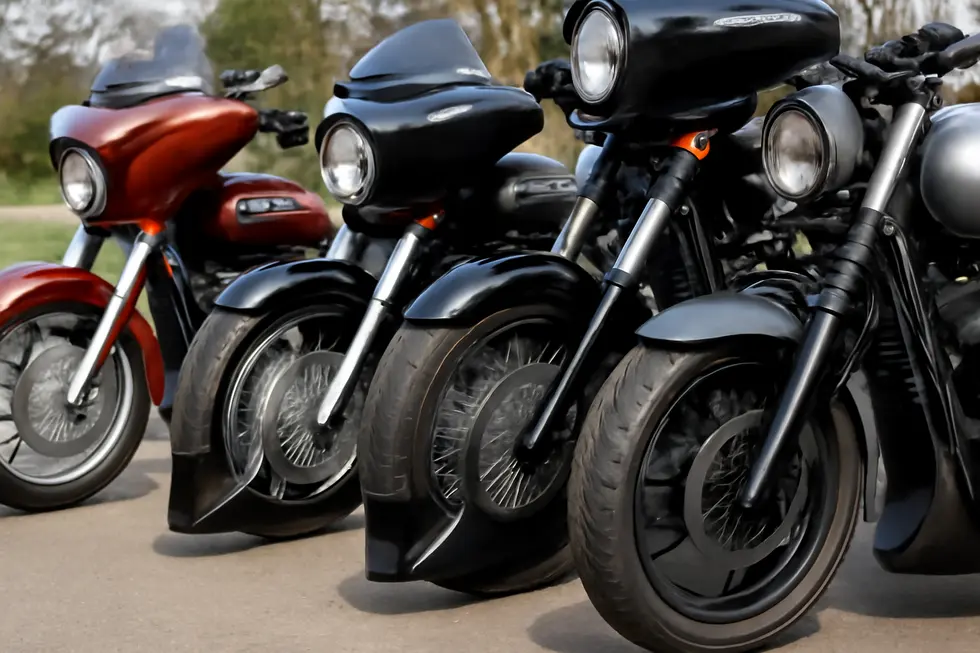
1. Innovations in Chin Fairing Design that Shape Aerodynamic Performance
Motorcycle chin fairings showcase a range of innovative designs aimed at optimizing aerodynamic performance by managing airflow and enhancing stability. Among the most notable variations are integrated winglets and spoilers engineered to reduce wind drag and generate critical downforce. This downforce contributes to better high-speed stability, improving handling and rider confidence. Some advanced designs extend into ground effect aerodynamics, using sculpted fairings that manipulate air pressure beneath the bike to press it closer to the road surface during cornering, thereby increasing traction and control.
Material technology plays a crucial role, with carbon fiber and precision-molded composites reducing weight while refining aerodynamic profiles. Such thoughtful shaping improves airflow smoothness around the chin area, which not only decreases resistance but also affects rider comfort by channeling wind away from the rider’s chest and face. This minimizes wind noise and fatigue, essential for long-distance or high-speed riding.
Incorporating vented or sealed chin profiles further balances airflow and component cooling without compromising aerodynamic integrity. Through these combined technological advances, chin fairings evolve from mere aesthetic add-ons into performance-enhancing components that directly impact drag reduction, stability, and rider experience. For those interested in exploring these advancements further, detailed insights on aerodynamic designs can be found through expert-curated motorcycle fairing resources.
2. Balancing Cost and Performance: Economic Impact of Chin Fairing Designs and Aerodynamics
Motorcycle chin fairings represent a critical intersection between aerodynamic efficiency and economic considerations. Their design variations—ranging from vented styles with airflow channels to smooth, solid profiles—directly influence manufacturing expenses and operational savings. Materials like heavy-duty urethane and robust plastics provide durable solutions at moderate costs, fostering wider market accessibility. In contrast, advanced composites, although offering superior aerodynamics and weight reduction, significantly drive up production investment.
These design choices extend beyond initial manufacturing costs. Improved aerodynamics through well-crafted chin fairings reduce drag, enhancing fuel efficiency and stability. This operational economy appeals to riders by lowering long-term expenses, particularly in touring motorcycles where sustained performance gains justify higher upfront prices. Conversely, simpler fairings remain attractive for budget-conscious customers prioritizing aesthetics and basic protection.
Market appeal also plays a pivotal role. Consumers often associate sleek, functional designs with premium quality, allowing manufacturers and aftermarket suppliers to command higher price points. Additionally, ease of installation—such as bolt-on setups compatible with popular motorcycle models—can reduce labor costs and encourage adoption.
Ultimately, the economic dynamics around chin fairings balance material quality, aerodynamic function, and consumer preferences. By carefully selecting design features, manufacturers optimize cost-effectiveness while enhancing performance and style. For a comprehensive range of affordable and high-quality options, explore affordable motorcycle fairings at Summit Fairings.
3. Global Influences Shaping the Aerodynamics and Design Diversity of Motorcycle Chin Fairings
The evolution of motorcycle chin fairings is profoundly shaped by global geopolitical dynamics that influence manufacturing capacities, market demands, and technological innovation. Different regions bring unique priorities that guide design choices and aerodynamic developments. For example, leading manufacturing nations like the USA and Japan emphasize integrating advanced aerodynamic principles—frequently employing computational fluid dynamics (CFD)—to reduce drag and improve rider comfort. This approach often results in sophisticated fairings designed not only for performance but also for style and ergonomics.
Conversely, markets in Asia prioritize affordability and durability, impacting the materials and simpler designs used in many lower-cost fairings. China’s expanding manufacturing influence focuses on cost efficiency and volume production, affecting aftermarket variety and accessibility worldwide. Meanwhile, cultural preferences add another layer of complexity: American designs often feature bold, aggressive styling while also maintaining aerodynamic efficiency, reflecting both aesthetic and functional demands.
Regulatory environments further steer design and function, with European and North American riders gravitating toward fairings optimized for high-speed touring and stability. These geopolitical factors converge to create a diverse ecosystem of chin fairings worldwide, balancing performance, style, and practicality. This comprehensive influence explains why motorcycle chin fairings vary so widely in shape, material robustness, and aerodynamic functionality across different markets.
For further insights on worldwide motorcycle fairing innovations, explore more details at the Summit Fairings blog.
4. Balancing Rider Comfort and Societal Benefits Through Aerodynamic Chin Fairing Designs
Motorcycle chin fairings play a pivotal role in enhancing rider comfort while delivering broader societal advantages through their aerodynamic design variations. By streamlining airflow around the lower front section, these fairings significantly reduce wind turbulence and buffeting at the chest and face levels, which diminishes rider fatigue during prolonged rides and improves stability at higher speeds. Incorporation of vented openings or winglets in some fairing designs effectively channels airflow, promoting ventilation that prevents visor fogging and maintains clear visibility—crucial for rider safety and comfort under varied weather conditions.
Beyond enhancing personal comfort, aerodynamic optimization lowers overall drag, contributing to fuel efficiency and reduced emissions, aligning with societal goals for environmental sustainability. Fairings equipped with spoilers or winglets minimize pressure fluctuations around the motorcycle, stabilizing handling and control, which can decrease accident risks. This fusion of form and function is evident in sportbike aerodynamic features, where aggressive styling harmonizes with airflow management to optimize performance while keeping riders protected.
Thus, in motorcycle chin fairings, thoughtful design variations transcend aesthetics to deliver measurable improvements in rider experience and societal impact. These functional enhancements support safer, more efficient motorcycle operation, showcasing how aerodynamic science contributes directly to everyday riding comfort and broader environmental objectives. For a deeper understanding of these design elements and their effects, consider exploring in-depth resources on motorcycle fairings and aerodynamic solutions available at Summit Fairings.
Chapter 3: Aftermarket Products and Model-Specific Fitment for Motorcycle Chin Fairings
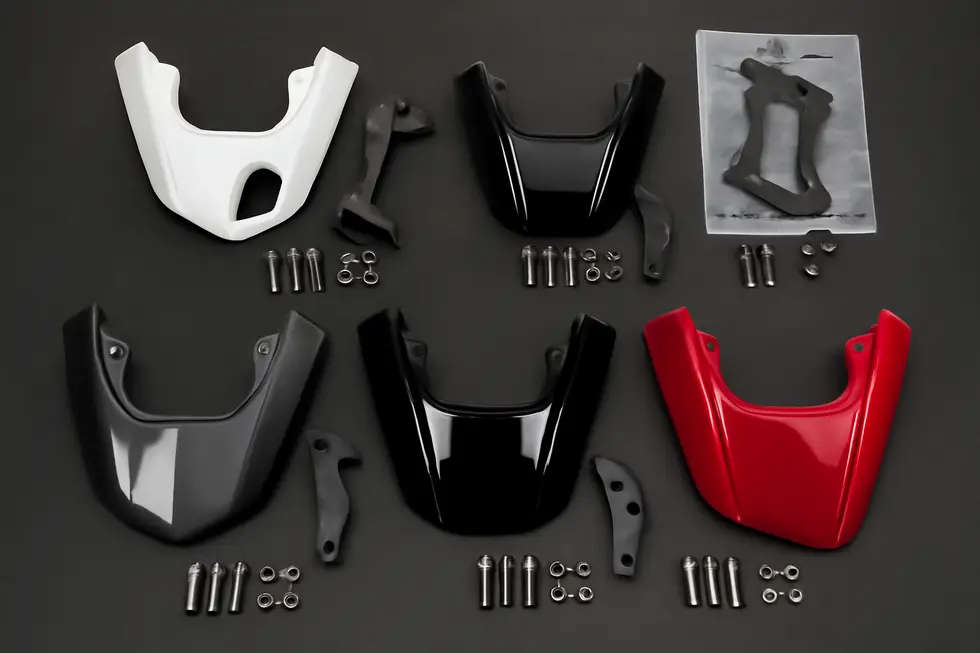
1. Material Innovations and Fitment Precision Shaping Quality in Aftermarket Motorcycle Chin Fairings
Motorcycle chin fairings in the aftermarket sphere reflect a spectrum of material choices, each influencing durability, weight, and aesthetic value. ABS plastic is a common material, favored for its impact resistance, affordability, and ease of repair, making it ideal for riders seeking dependable yet budget-friendly options. While robust, ABS typically lacks the premium feel and lightweight benefits of more advanced materials.
Fiberglass, lighter and capable of complex contours, offers a visually appealing alternative but tends to be more brittle and susceptible to cracks on impact. Conversely, carbon fiber represents the high end of material technology. Its exceptional strength-to-weight ratio and rigidity appeal to riders who prioritize performance and style. Carbon fiber chin fairings are meticulously manufactured using advanced processes like pre-preg layups cured in autoclaves, ensuring minimal flaws such as delamination or resin voids. UV-resistant coatings further extend their lifespan by resisting fading or yellowing.
Equally vital is model-specific fitment, a factor ensuring bolt-on installation without adaptations that could weaken structural integrity or compromise the motorcycle’s aerodynamics. Premium parts align precisely with factory mounting points and contours, accommodating differences between model years and variants. While universal ABS or fiberglass options exist, they may require adjustments, often sacrificing seamless integration.
This balance of advanced materials and exact fitment underscores the importance of selecting aftermarket chin fairings designed with both craftsmanship and compatibility in mind. To explore more about premium customizations in motorcycle fairings, visit the resource for discovering unmatched choices in motorcycle fairings at Summit Fairings.
2. Precision Design and Seamless Installation: Enhancing Fit and Function in Aftermarket Motorcycle Chin Fairings
Aftermarket motorcycle chin fairings are engineered to deliver a precise fit tailored to specific bike models, ensuring their integration is both seamless and effective. Crafted predominantly from durable materials like thick urethane or ABS plastic, these fairings combine strength with resistance to impacts and road debris. Their design reflects a deep focus on matching OEM contours and mounting points, which enables a straightforward bolt-on installation free from the need for modifications. This careful engineering supports riders seeking improvements in both aesthetics and performance without compromising the bike’s original bodywork harmony.
Beyond appearance, well-fitted chin fairings improve aerodynamic performance and protect critical components such as the engine and radiator from environmental damage. Variations in design, including either smooth fronts or vented openings with stainless steel screens, provide riders options to enhance airflow or maintain sleek styling according to personal preference. Installation kits typically include all necessary hardware and brackets, accompanied by clear instructions to simplify the process to a brief timespan.
Compatibility considerations remain crucial, as some aftermarket products exclude certain model variations or fender styles. Confirming exact model and year fitment ensures the chosen fairing complements the motorcycle’s existing structure and performance needs. By embodying durable material construction, model-specific precision, and ease of installation, these aftermarket chin fairings elevate both function and style.
For those interested in further insights on aftermarket bodywork solutions, exploring resources like the Summit Fairings blog can provide valuable perspectives.
3. Economic Forces and Market Dynamics Shaping Aftermarket Customization and Fitment of Motorcycle Chin Fairings
The aftermarket segment for motorcycle chin fairings is heavily influenced by evolving economic forces and shifting market dynamics. Rider demand for customized appearance and enhanced aerodynamic performance drives manufacturers to produce model-specific fairings that deliver precise fitment and functionality. Economic conditions such as recessions or global disruptions have temporarily dampened spending, redirecting interest toward DIY installation and home customization, which sustains aftermarket activity despite reduced professional service availability. Regional growth trends, especially in North America, fuel expansion as producers broaden offerings to support new motorcycle models and varied riding preferences. Further shaping this market is an increasing focus on demographic diversity, with manufacturers creating designs that consider ergonomics and style preferences appealing to female riders, thereby opening new segments for tailored fitment options. Technological advancements in materials and manufacturing processes enable the production of durable, lightweight, and precisely molded chin fairings, enhancing product quality and fit. Meanwhile, e-commerce platforms facilitate consumer access to a wide range of aftermarket fairings with assured compatibility, supporting market expansion. These intertwined economic and market factors continually drive innovation and specialization in aftermarket motorcycle chin fairings. For those interested in exploring detailed motorcycle fairing choices and fitments, discover affordable motorcycle fairings at Summit Fairings offers a comprehensive resource.
4. Navigating Customization and Model Compatibility Challenges in Aftermarket Motorcycle Chin Fairings
Aftermarket motorcycle chin fairings offer riders a blend of style, performance, and protection, yet achieving the ideal fit and function demands careful navigation of customization and compatibility challenges. These fairings come in varied materials such as ABS plastic, fiberglass, and carbon fiber, enabling customization to match both aesthetic preferences and aerodynamic goals. However, opting for bespoke finishes or specialized hardware can increase installation complexity and costs, often requiring professional expertise.
Compatibility hinges on precise design tailored to specific motorcycle models and years, with mounting kits engineered to align exactly with existing bolt points and frame geometries. Using a chin fairing mismatched to the motorcycle can cause poor fitment, damage risk, and aesthetic compromises. Model-specific complexities arise from differences in mounting locations, wiring layouts, and auxiliary components, making alignment and interference avoidance critical. Additionally, modifications must preserve aerodynamics and rider comfort without affecting structural integrity.
Ensuring correct fitment is essential not only for safety and appearance but also to maintain warranty validity, as improper installations or incompatible parts may void coverage. Riders should verify compatibility against model year, variant, and consult user feedback or supplier guidance to minimize installation hurdles. This thoughtful approach balances the desire for personalized styling with the practical demands of fit and function, illustrating why detailed attention to model-specific factors is vital when selecting an aftermarket chin fairing. For those interested in exploring options further, discover affordable motorcycle fairings at Summit Fairings offers valuable insights and product variety.
Chapter 4: Styling and Performance Enhancements via Motorcycle Chin Fairings
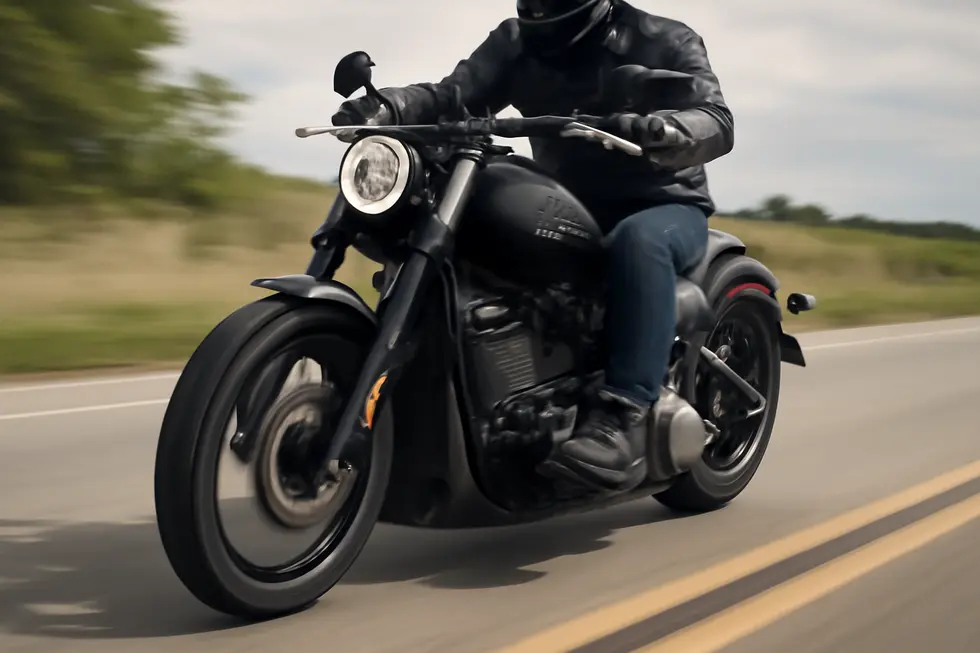
1. Cutting-Edge Aerodynamics and Materials Transforming Motorcycle Chin Fairings
Innovations in motorcycle chin fairings have significantly advanced both stylistic design and functional performance, chiefly through aerodynamic refinement and material breakthroughs. Positioned strategically at the motorcycle’s lower front, these fairings streamline airflow, reducing drag and turbulence that can destabilize riders at high speeds. Modern designs integrate features such as air deflectors and winglets, which work in harmony to manage airflow and lessen wind buffeting, thereby improving rider stability and comfort.
Material technology has evolved alongside aerodynamic engineering. The incorporation of lightweight yet robust materials, including carbon fiber composites and advanced plastics like ABS and polypropylene, reduces overall bike weight and enhances rigidity. This weight reduction contributes to improved acceleration and handling, translating to a more responsive ride experience. The application of these materials ensures durability without compromising the fairing’s structural integrity or aesthetic quality.
Moreover, some latest models combine aerodynamic chin fairings with integrated electronic enhancements—such as traction control and customizable ride modes—that further amplify safety and handling precision. These features collectively elevate rider confidence by harmonizing form and function.
This synergy of aerodynamic ingenuity and advanced materials not only refines performance metrics but also heightens the visual impact of the motorcycle’s front profile, offering riders a balanced blend of aggressive styling and practical benefit. For more insight into contemporary fairing options that blend style and technology, check out this detailed guide on explore the best motorcycle fairings at Summit Fairings.
2. Driving Market Demand: How Styling and Performance Boost Economic Growth through Motorcycle Chin Fairings
Motorcycle chin fairings play a pivotal role in stimulating market demand by blending aesthetic appeal with functional performance. These components enhance a bike’s visual identity, attracting riders who seek individuality and distinctive design elements. Beyond style, chin fairings contribute significantly to aerodynamic efficiency by reducing drag and improving high-speed stability. This dual impact amplifies their value proposition, encouraging consumers to invest in upgrades that offer both form and function.
The aftermarket and premium motorcycle segments thrive on this synergy of appearance and performance. Enthusiast communities drive growth by prioritizing customization and performance enhancements, sustaining steady demand for chin fairings and associated accessories. The willingness to pay a premium also emerges in factory-equipped models, where advanced fairings underscore exclusivity and technical refinement.
Global trends underscore an expanding market for aerodynamic components, projected to grow notably due to increasing consumer focus on fuel savings and advanced design. While potential buyers may weigh concerns like warranty and insurance effects, the enthusiasm for personalized, performance-oriented modifications often outweighs these reservations. As a result, chin fairings continue to fuel economic vitality in the motorcycle industry by catering to evolving rider preferences and industry innovations.
Explore how strategically chosen fairings can transform your motorcycle’s style and performance in greater detail at discover affordable motorcycle fairings at Summit Fairings.
3. Geopolitical Dynamics Shaping the Evolution and Adoption of Motorcycle Chin Fairings
The evolution and widespread adoption of motorcycle chin fairings are deeply intertwined with geopolitical forces that shape manufacturing landscapes, trade policies, and environmental norms across regions. Predominantly, Asian manufacturing powerhouses, especially China and India, have become critical hubs for producing these components, leveraging expansive industrial capabilities and growing domestic demand. However, trade tensions, such as tariffs between the United States and China, directly impact the cost, availability, and supply chain efficiency of chin fairings, influencing regional adoption patterns.
Additionally, stringent environmental policies in many countries encourage the development of aerodynamic motorcycle components that enhance fuel efficiency and reduce emissions. Chin fairings contribute by improving airflow beneath the front of the motorcycle, aligning with sustainability drives and regulatory frameworks that prioritize ecological responsibility.
Economic growth in emerging markets fosters a rising middle class eager for motorcycles that combine performance with advanced styling, positioning chin fairings as symbols of modernity and technological progress. This demand encourages manufacturers to tailor designs and materials that resonate with these consumers.
Global competition and alliances further fuel innovation, enabling technological exchanges that shape design trends and functional enhancements. Consequently, geopolitical dynamics not only determine where and how chin fairings are produced but also steer their stylistic and performance attributes over time.
For insights on how these components reflect evolving market trends, explore this resource on affordable motorcycle fairings.
4. How Evolving Rider Preferences Shape the Design and Functionality of Motorcycle Chin Fairings
Motorcycle chin fairings have become pivotal in reflecting the dynamic interplay between rider demands and societal trends. Increasingly, enthusiasts prioritize aerodynamic efficiency to maximize speed and stability, especially among sportbike riders who benefit from the streamlined airflow that chin fairings facilitate. This aerodynamic refinement contributes not only to better performance but also to rider control during high-speed maneuvers. Equally compelling is the surge in consumer desire for personalized aesthetics, where custom builders and aftermarket providers blend unique finishes, vented or seamless designs, and innovative materials to craft head-turning visuals. This drive for individuality dovetails with a broader inclusivity movement, as manufacturers consider ergonomic variations and styling nuances that appeal to a wider and more diverse motorcycling community, including female riders. Technological advancements deepen this evolution, with materials like carbon fiber and machined billet parts lending strength while reducing weight, and integrated electronics enhancing usability without compromising the fairings’ sleek profiles. Enthusiast culture further fuels these changes by embracing tasteful modifications that meld style and function, often improving a bike’s market appeal. Together, these forces ensure that motorcycle chin fairings do more than protect and perform—they embody the rider’s identity and the progressive spirit of modern motorcycling. For more insight into how these preferences influence design, explore expert perspectives on motorcycle fairings.
Final thoughts
Motorcycle chin fairings represent a dynamic intersection of material science, aerodynamic engineering, and visual design — qualities that collectively empower businesses to broaden their aftermarket offerings and satisfy diverse rider needs. A deep comprehension of material composition and installation ensures reliable product recommendations and minimizes customer service challenges. Insight into design variations sharpens inventory selection to balance airflow, cooling needs, and stylistic preferences. Leveraging knowledge of aftermarket options and accurate model fitments enables efficient stocking and boosts customer confidence. Ultimately, highlighting the tangible styling and performance enhancements afforded by chin fairings contributes to stronger sales messaging, better customer retention, and sustained growth. For business owners, mastering these facets of motorcycle chin fairings transforms offerings into compelling value propositions that stand out in an increasingly competitive market.
Ready to elevate your ride? Summit Fairings delivers premium, custom-fit fairings that blend style and durability. Whether you’re chasing speed or turning heads, we’ve got your bike covered. Don’t wait—transform your machine today. Click, customize, and ride with confidence. Your perfect fairing is just a few clicks away. Act now!
About us
undefined
RELATED POSTS
View all

